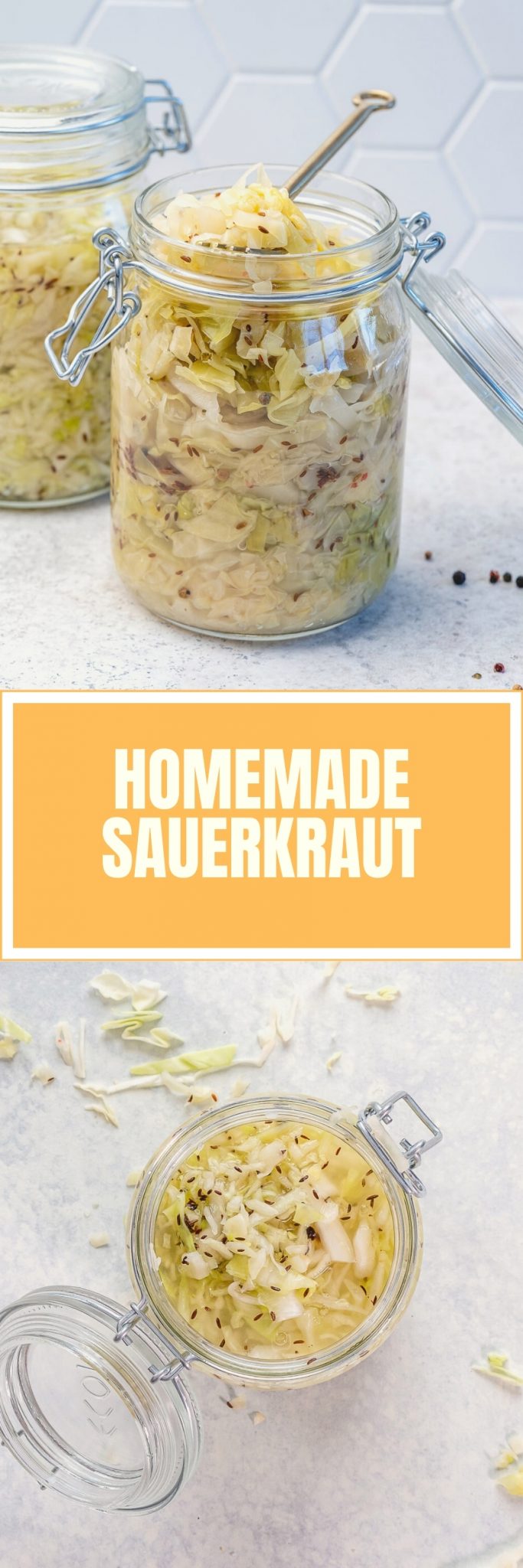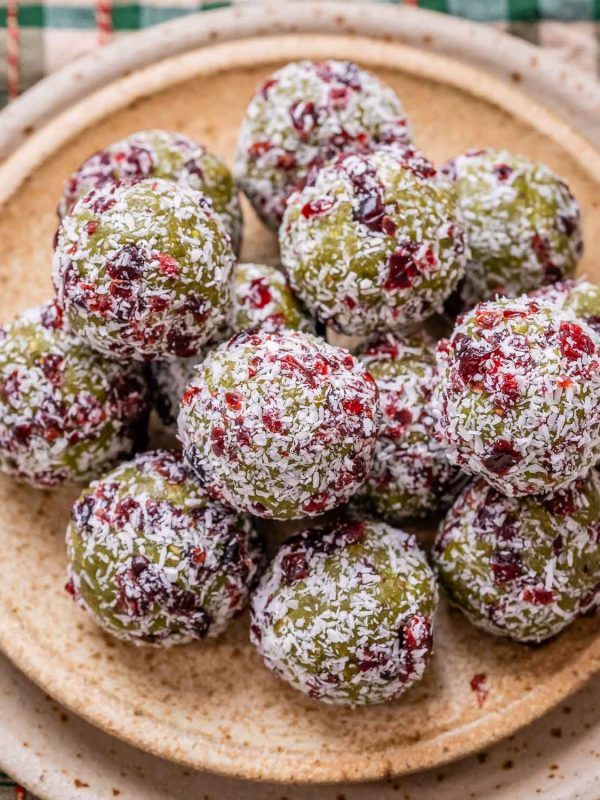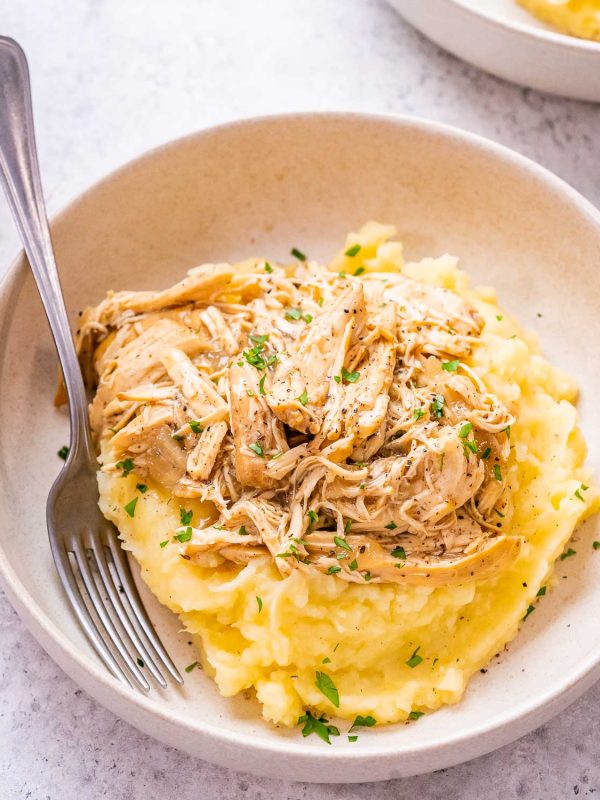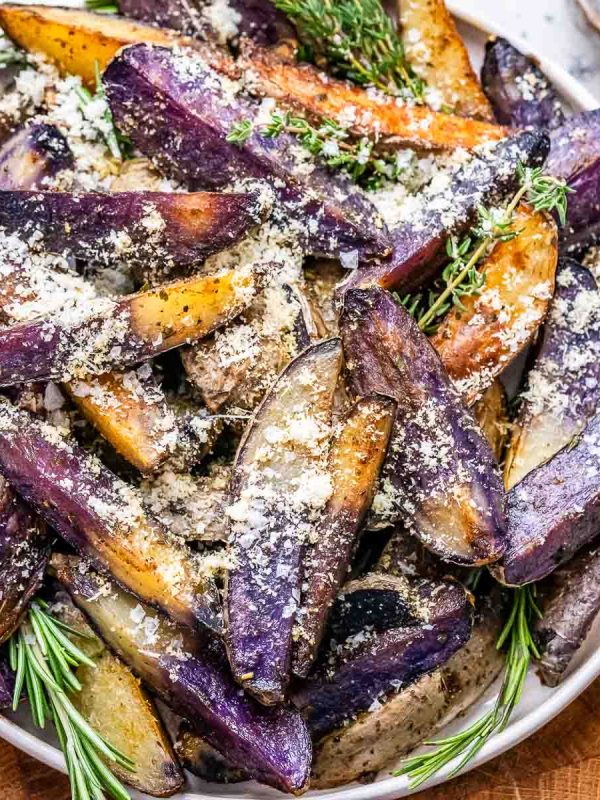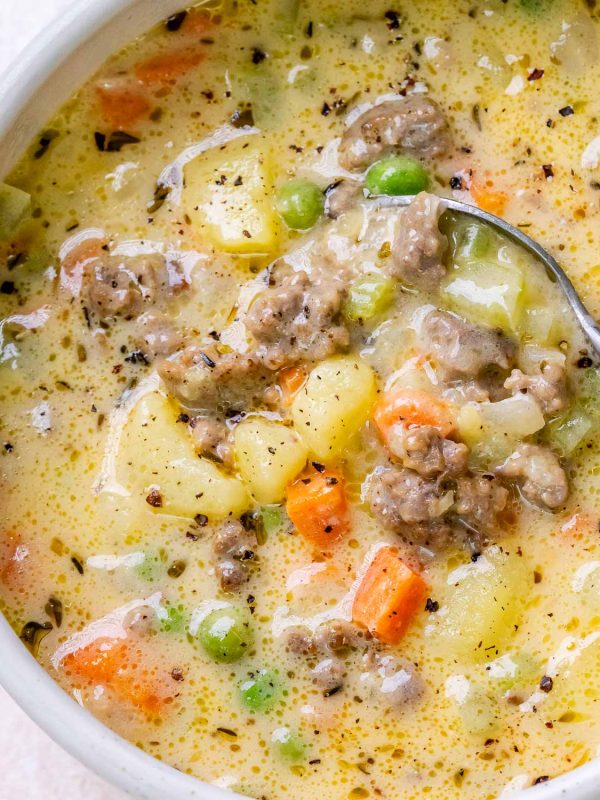This post contains affiliate links. Please see our disclosure policy.
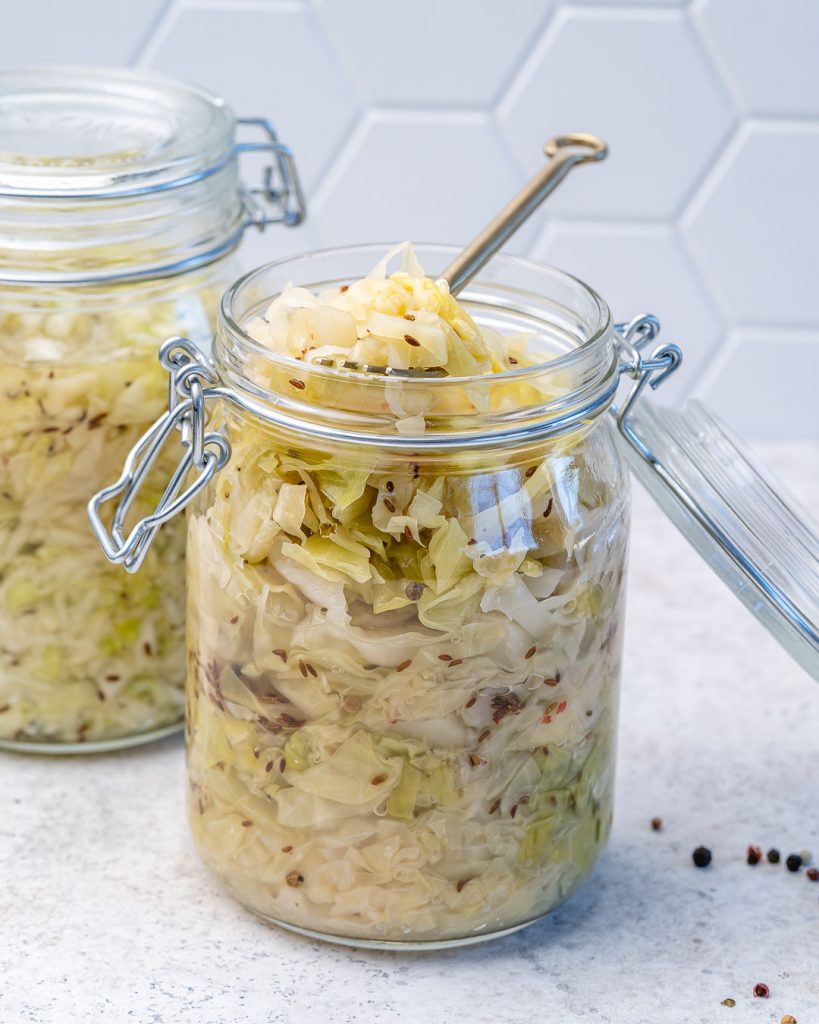

Homemade Raw Sauerkraut
By VERY POPULAR REQUEST, here’s our recipe and a video tutorial for you to make your own (inexpensive!) raw sauerkraut at home.
If you’ve ever participated in one of our programs here at CFC, you know that I sing/preach/nag about my love for sauerkraut quite often.
I eat a spoonful with several meals each day – most days, and I try to encourage others to do the same!
A happy + healthy tummy is a happy + healthy whole body. I believe sauerkraut is an EXCELLENT way to keep our digestive system running well, which translates to many other benefits which we cover in the following articles:
- Health Benefits of Raw Sauerkraut
- Natural Probiotics
- Probiotics for Health and Weight Loss
- Gut Health
If you need some tasty ideas for how to use sauerkraut, here are some AWESOME ways to eat more:
- Add it to eggs
- Eat it like salsa
- Add it to your cheese boards/top crackers
- As a condiment
- Top your salads
- Enjoy it on top of avocado toast
- A scoop with your turkey or chicken sausage
- Add it to your lettuce wraps

- Eat is as a side to any meal
- Add it to your breakfast burrito
- Use it in a dip such as hummus or blend it with cream cheese as a spread
- Top your chicken or fish tacos with it
- Add it to a sandwich or wrap
- Mix it with rice or a stir fry meal
- Add a dollop to your beans or chili
- Add it to your meal prep bowls
Makes about 4 cups
Ingredients:
- 4 lbs cabbage (about 1 medium-large head)
- 3 Tbsps coarse crystal sea salt or canning salt
- 2 tsp fennel seeds
- 1 tsp peppercorns
Extra brine:
1.5 tbsp canning salt per 1-QT of water
Instructions:
Remove any leathery outer leaves from your cabbage head and discard.
Place the cabbage on a large cutting board.
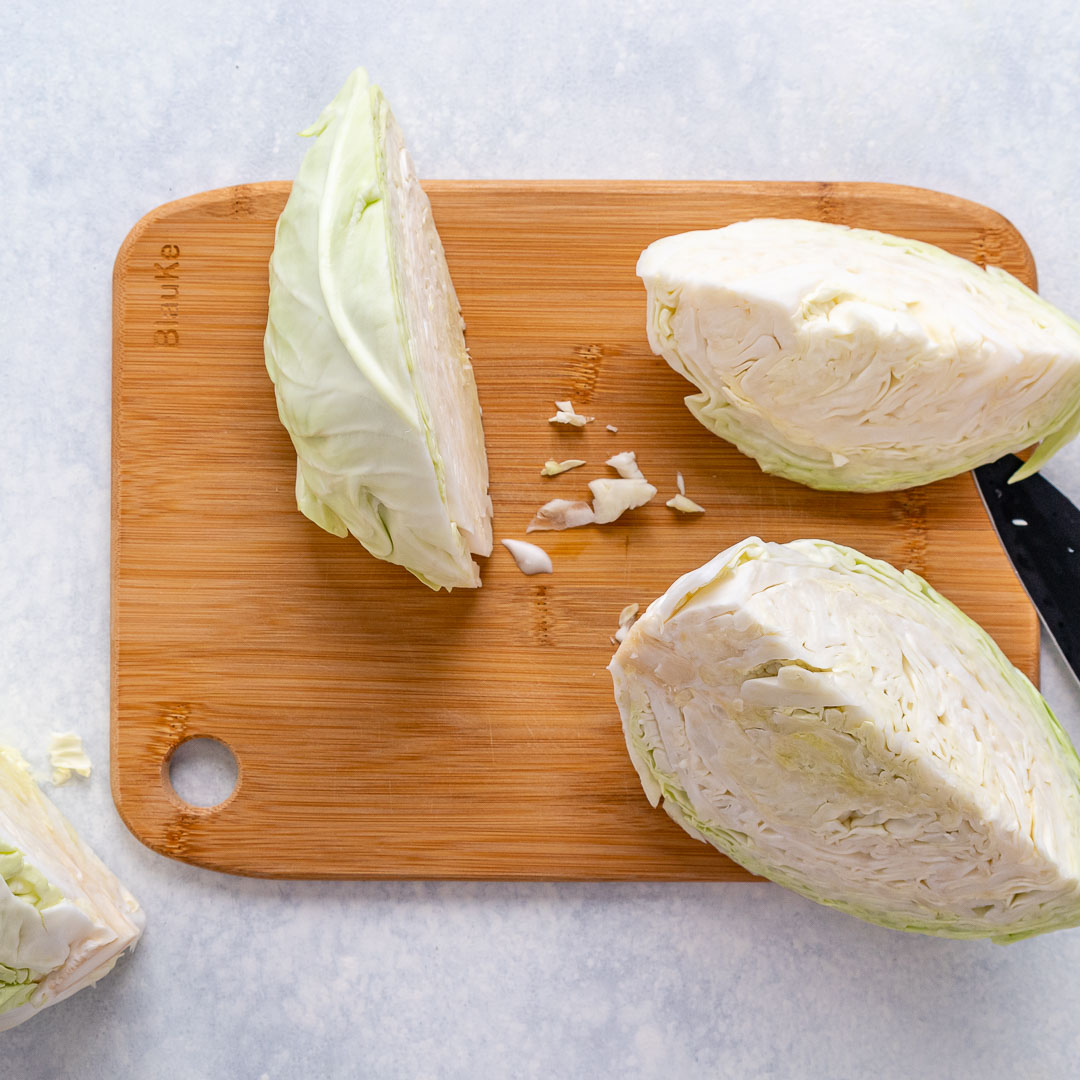
Using a sharp chef’s knife, carefully cut into quarters, then thinly slice it into 1/8 inch thick shaved slices,

Transfer your sliced cabbage to an extra large bowl.
Sprinkle with the sea salt and using your clean hands massage the cabbage until it starts to wilt and release plenty of liquid. This may take about 10 minutes or so.
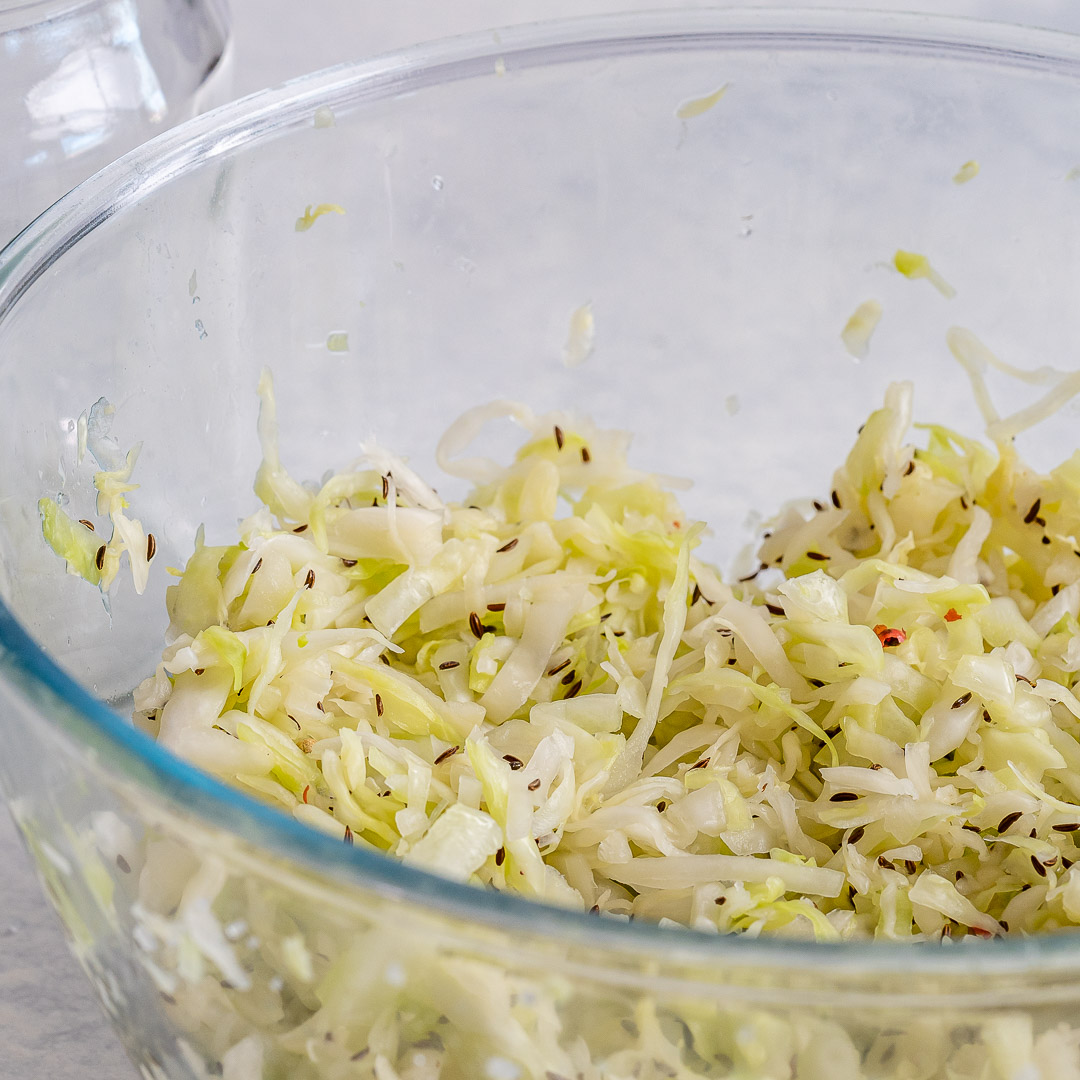
Stir in fennel seeds and peppercorns.
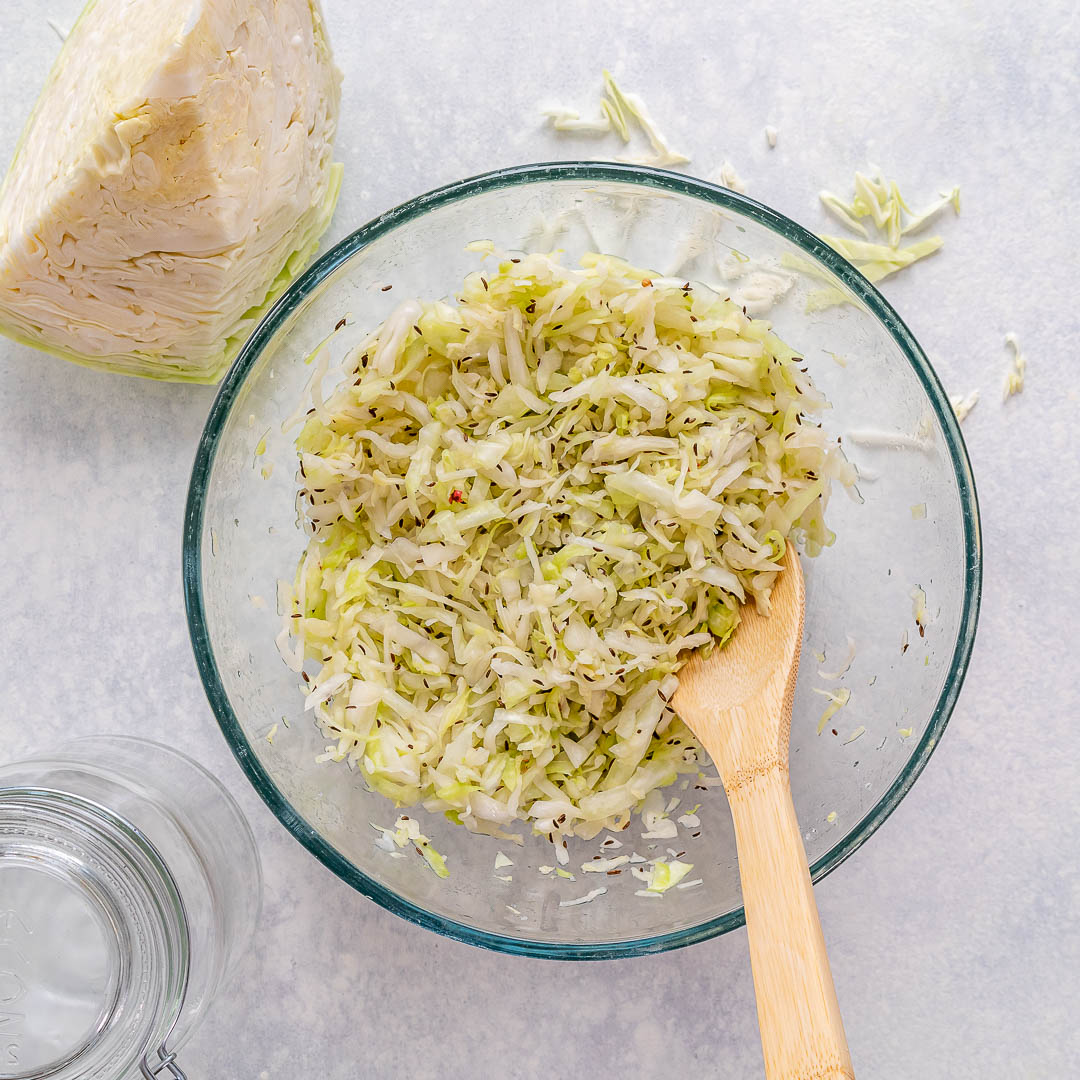
Use a clean 2-QT canning jar and firmly pack in the cabbage.
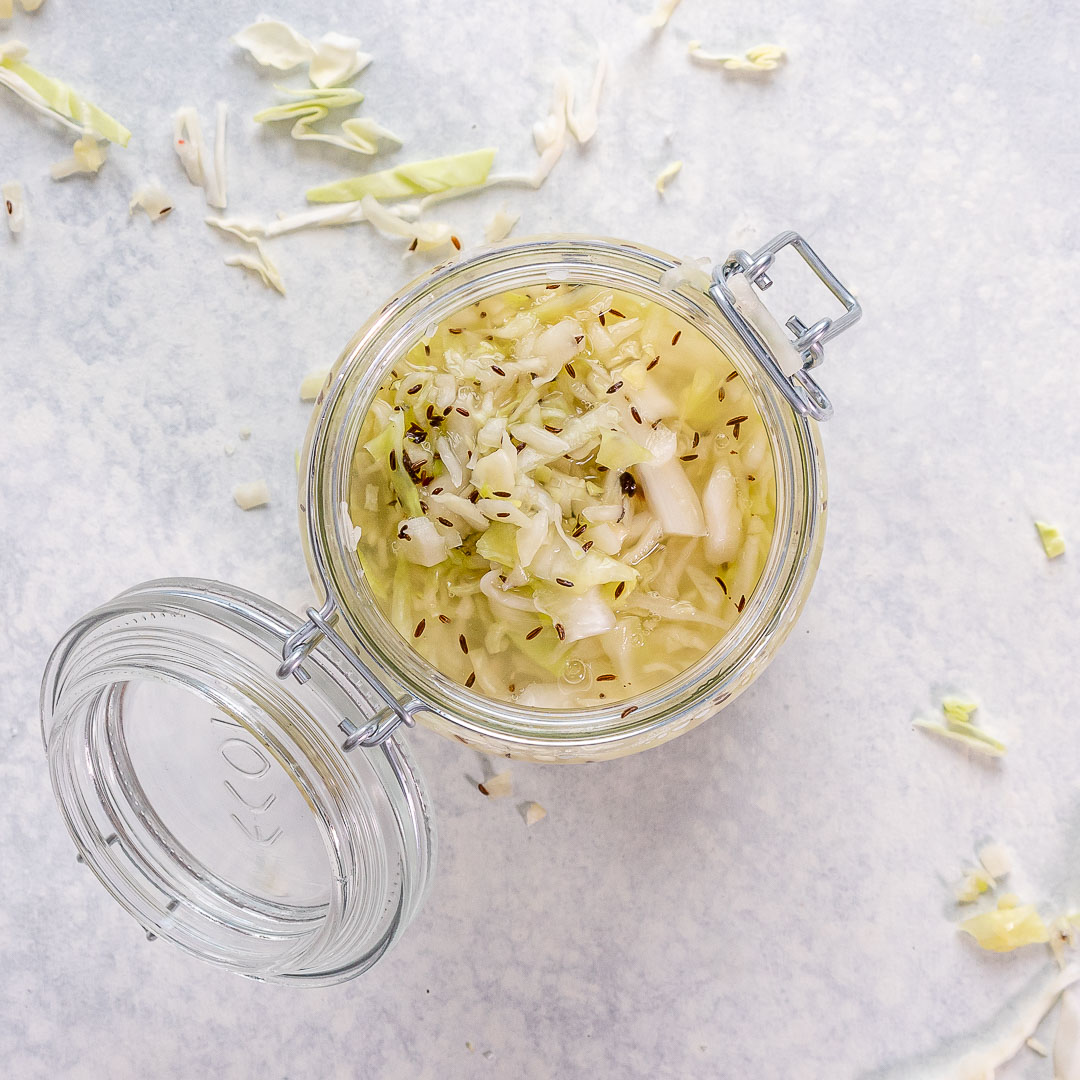
Make sure you tightly press it into the jar to have as little air bubbles as possible.
Weigh the cabbage down using a small plate, topped with a weight that fit the mouth of your jar (I use one or two 3.5 oz cans).
The liquid released by the cabbage must now cover it by 1-2 inches.
If it’s not covered, then you’ll need to make some extra brine, and allow it to fully cool.
Here’s how to make the extra brine, if needed: In a saucepan combine 1.5 Tbsps canning salt per 1-QT of water. Boil over high heat stirring until your salt is fully dissolved.
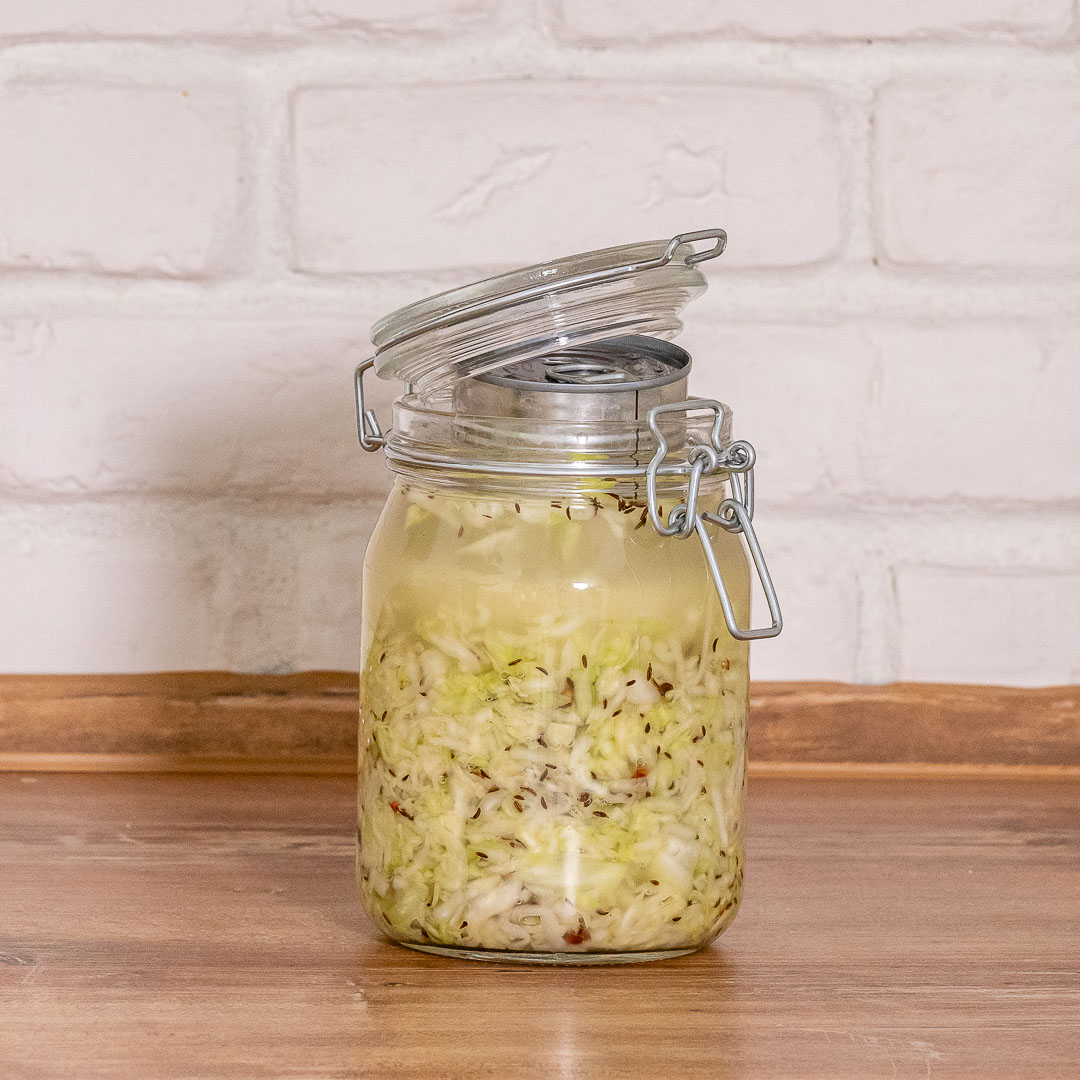
Remove from the heat and allow your brine to cool completely before adding it to jar.
Loosely cover the jar, to allow the gas produced by the fermenting cabbage to escape.
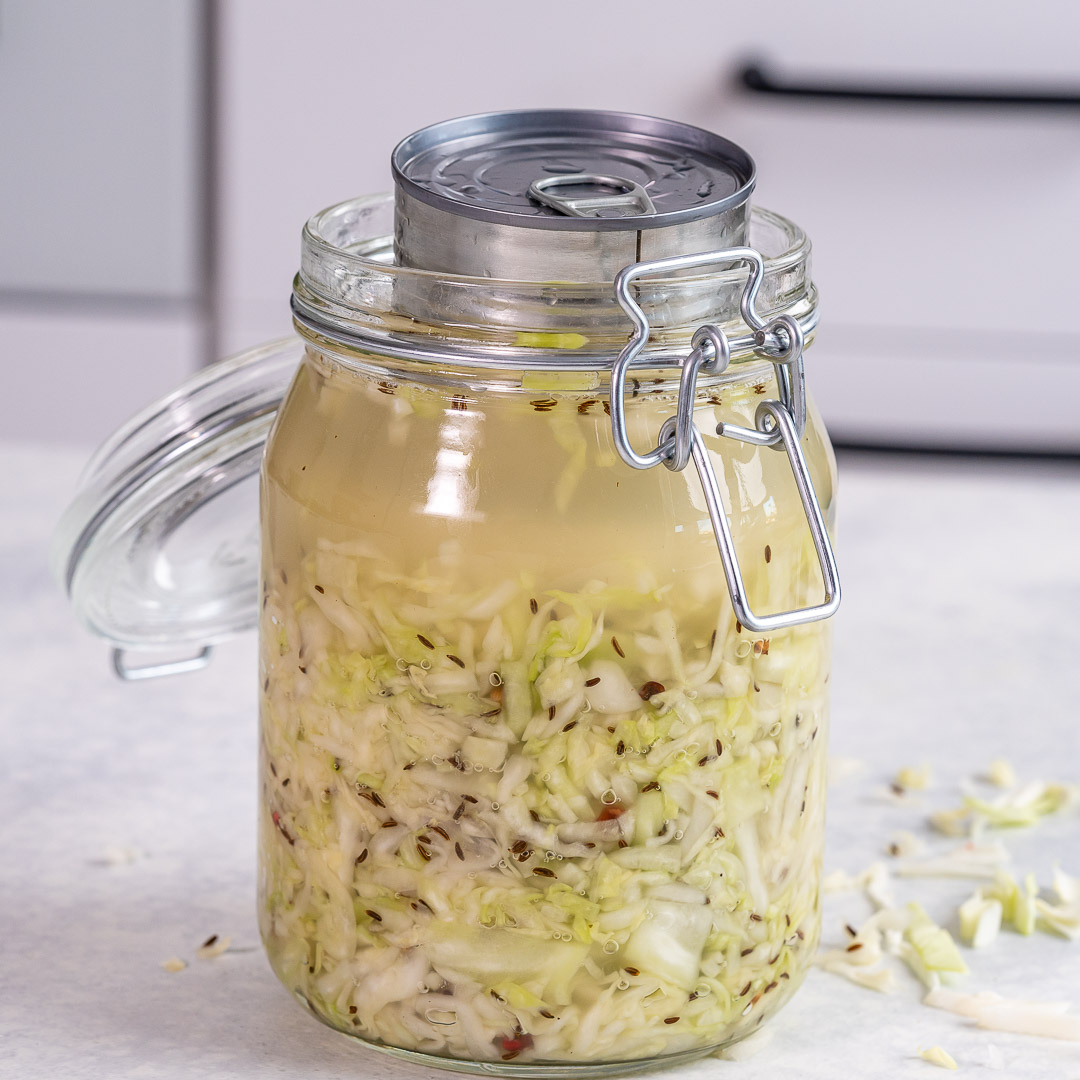
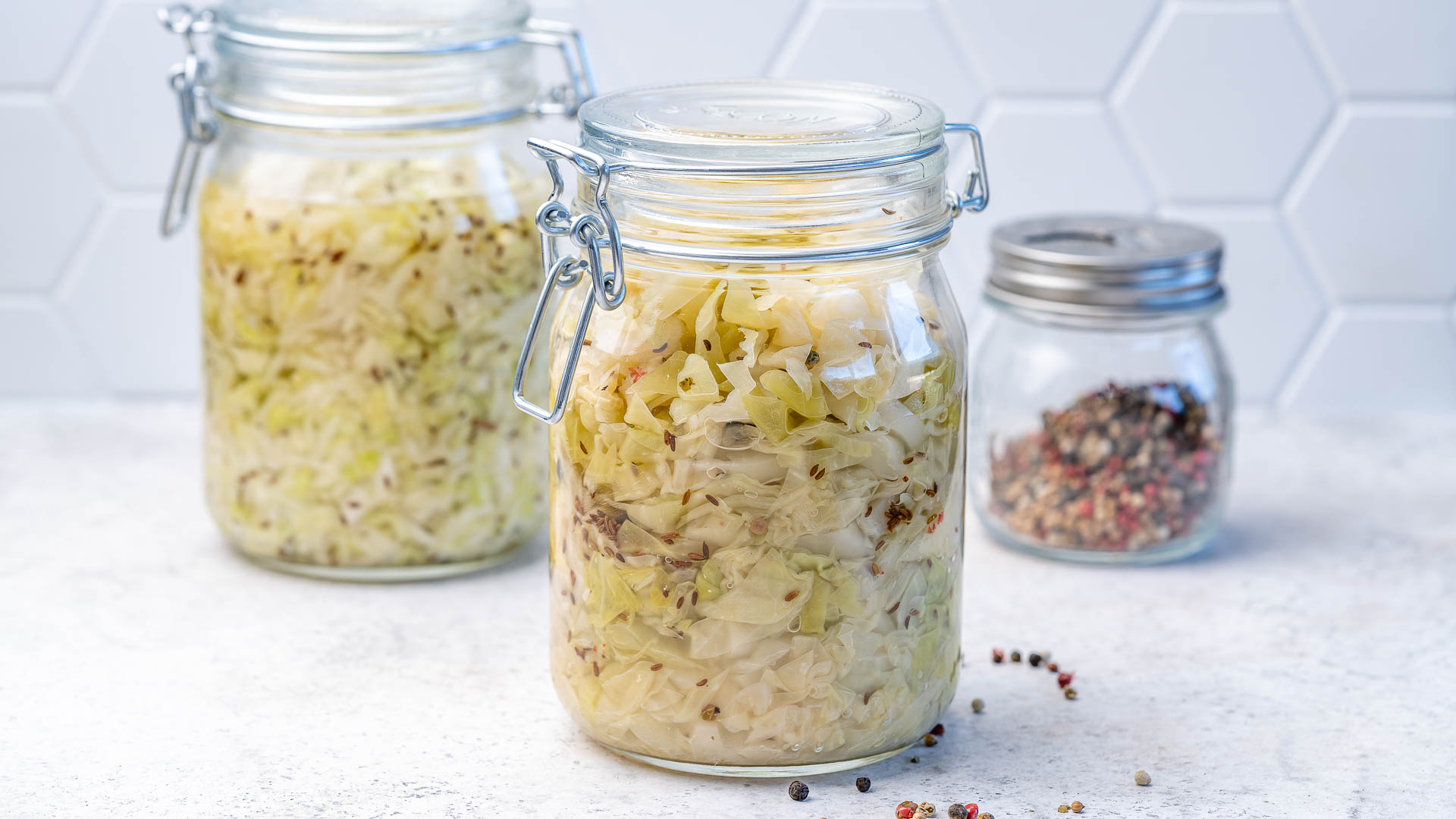
Alternately, you can cover the opening with a clean, heavy towel.
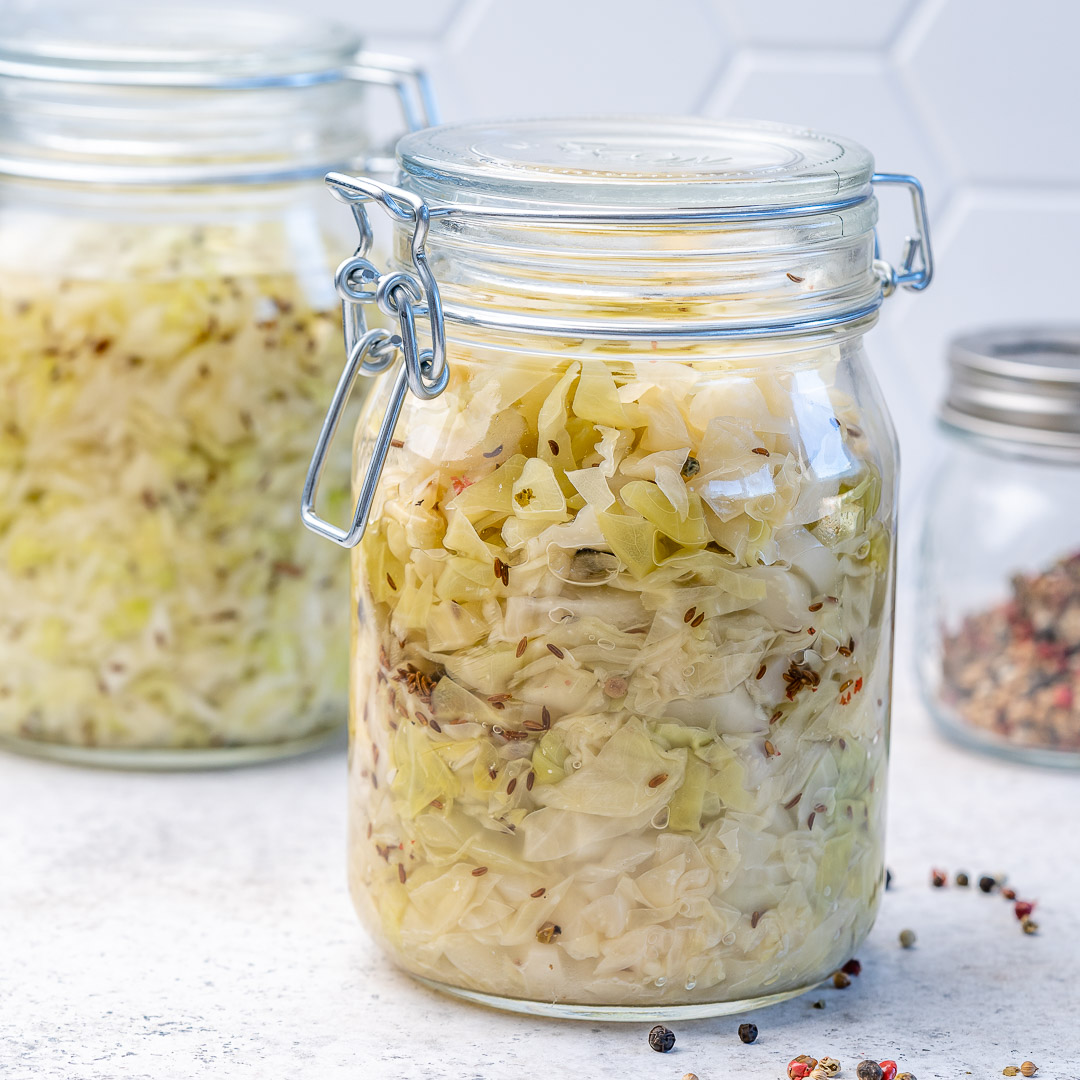
Leave the cabbage to ferment, undisturbed, between 70° and 75° degree room temperature for 3-4 weeks, or until bubbling stops.
Cabbage must be kept submerged below the surface of the fermenting liquid throughout fermentation. Check your crock 2-3 times each week; skim and remove any scum that may form on top of liquid. This is normal, just clean it up.
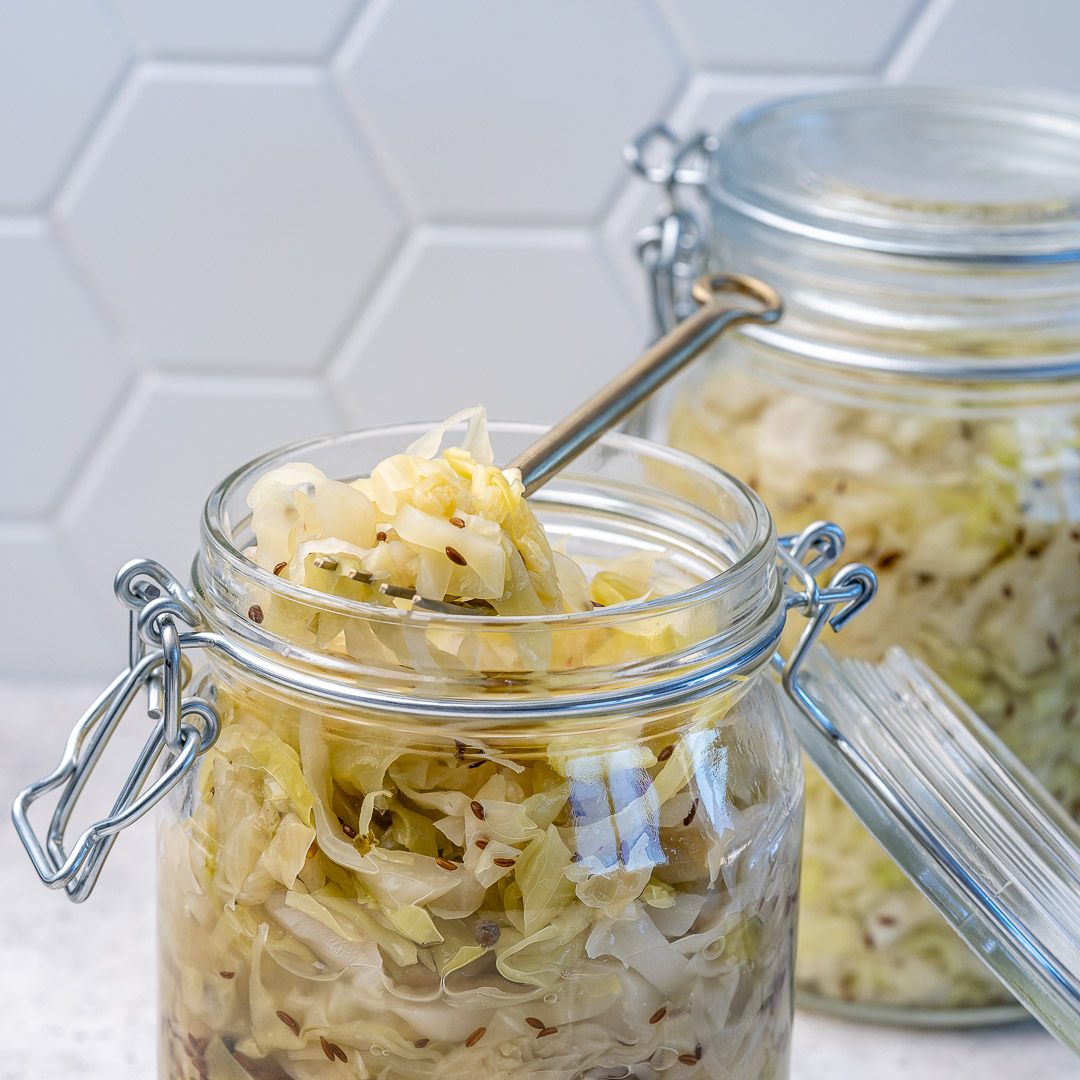
Once your cabbage is done, transfer to individual glass containers or jars and keep refrigerated for up to 3 months.
Enjoy!
❤Rachel
Homemade Raw Sauerkraut
Ingredients
- 4 lb cabbage, about 1 medium head
- 3 tbsp coarse crystal sea salt or canning salt
- 2 tsp fennel seeds
- 1 tsp peppercorns
Extra brine:
- 1.5 tbsp canning salt per 1-QT of water
Instructions
- Remove any leathery outer leaves from your cabbage head and discard.
- Place the cabbage on a large cutting board.
- Using a sharp chef's knife, carefully cut into quarters, then thinly slice it into 1/8 inch thick shaved slices.
- Transfer your sliced cabbage to an extra large bowl.
- Sprinkle with the sea salt and using your clean hands massage the cabbage until it starts to wilt and release plenty of liquid. This may take about 10 minutes or so.
- Stir in fennel seeds and peppercorns.
- Use a clean 2-QT canning jar and firmly pack in the cabbage.
- Make sure you tightly press it into the jar to have as little air bubbles as possible.
- Weigh the cabbage down using a small plate, topped with a weight that fit the mouth of your jar (I use one or two 3.5 oz cans).
- The liquid released by the cabbage must now cover it by 1-2 inches.
- If it's not covered, then you’ll need to make some extra brine, and allow it to fully cool.
- Here's how to make the extra brine, if needed: In a saucepan combine 1.5 Tbsps canning salt per 1-QT of water. Boil over high heat stirring until your salt is fully dissolved.
- Remove from the heat and allow your brine to cool completely before adding it to jar.
- Loosely cover the jar, to allow the gas produced by the fermenting cabbage to escape.
- Alternately, you can cover the opening with a clean, heavy towel.
- Leave the cabbage to ferment, undisturbed, between 70° and 75° degree room temperature for 3-4 weeks, or until bubbling stops.
- Cabbage must be kept submerged below the surface of the fermenting liquid throughout fermentation. Check your crock 2-3 times each week; skim and remove any scum that may form on top of liquid. This is normal, just clean it up.
- Once your cabbage is done, transfer to individual glass containers or jars and keep refrigerated for up to 3 months.
- Enjoy!
